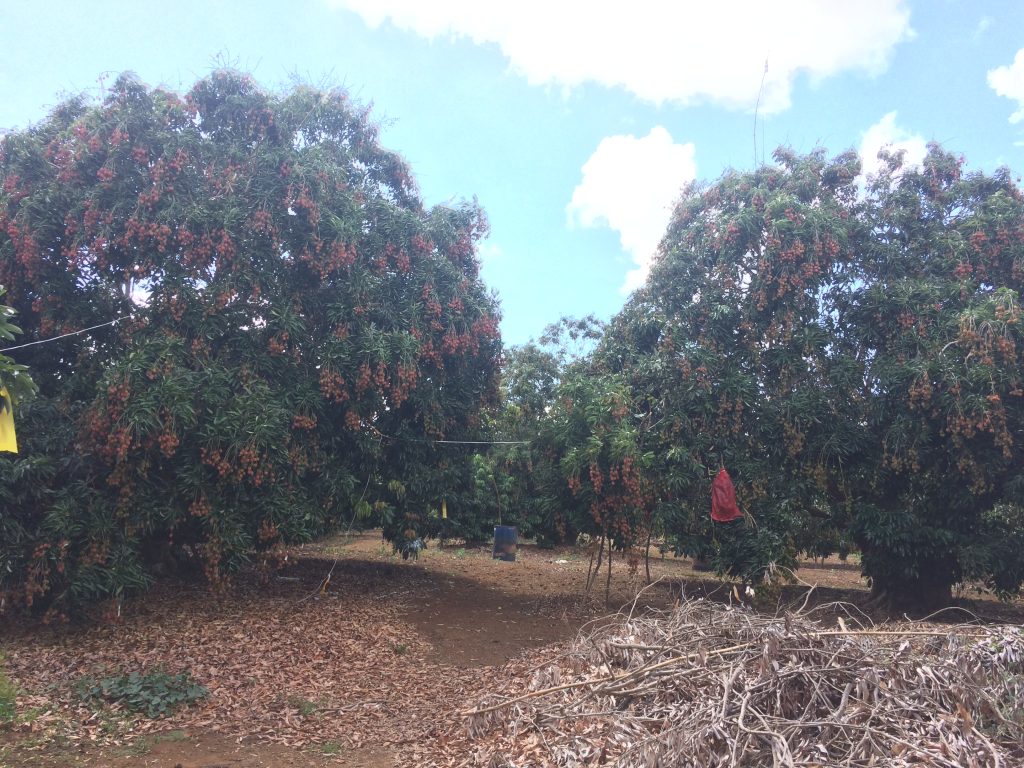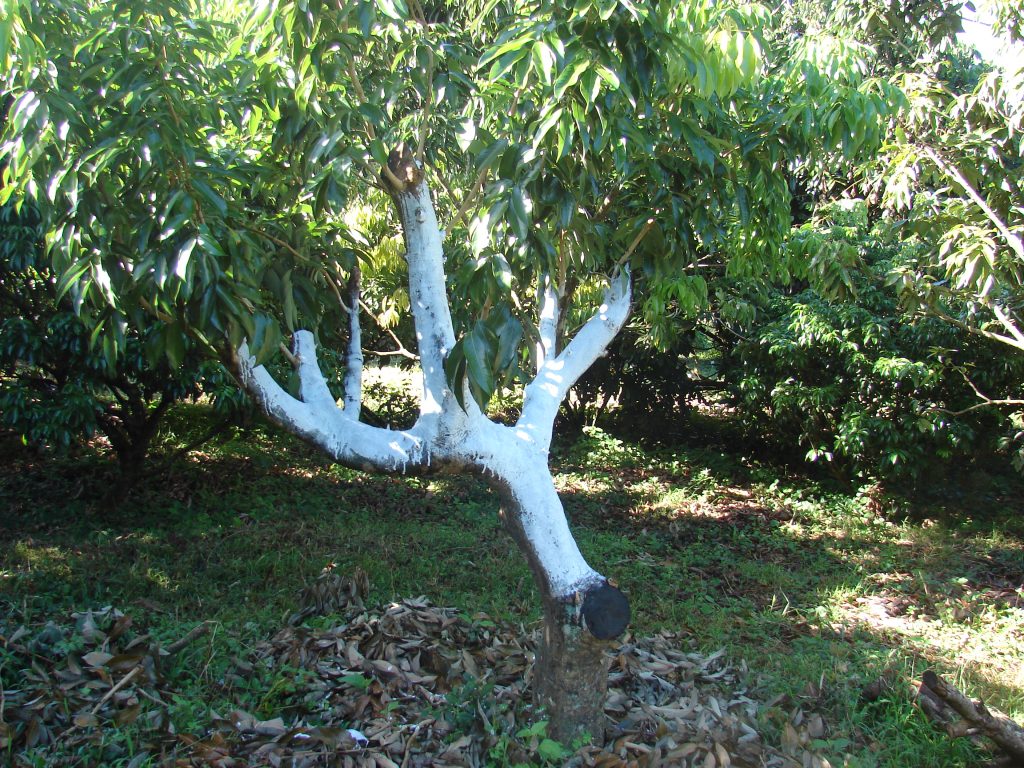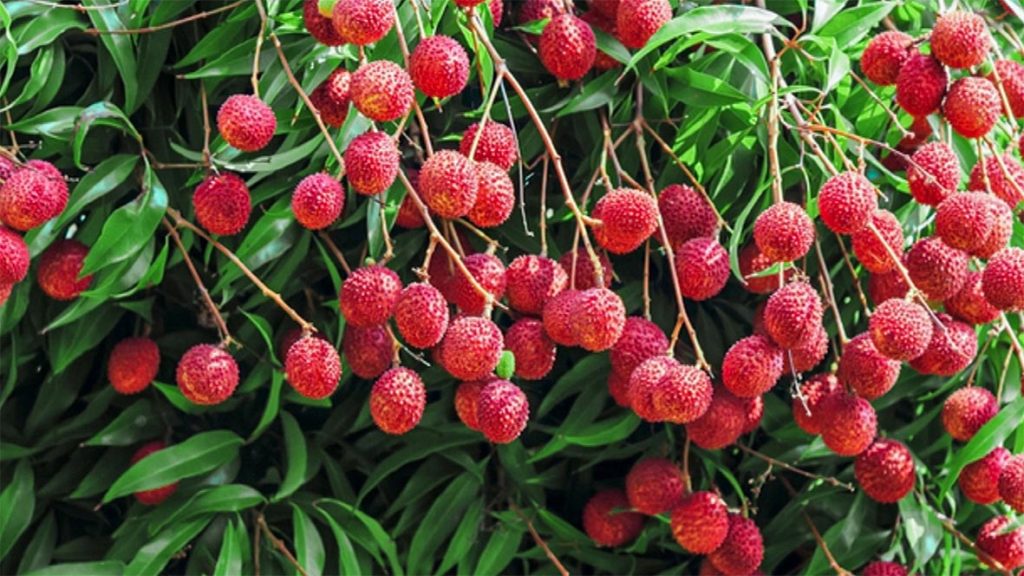Litchi tree management immediately after the fruit harvest is important as it will determine its productivity in the following year.Timely tree pruning and fertiliser application are two essential cultural practices in ensuring flowering and fruiting in litchi trees for the next season.
Pruning after harvest
Fruit harvesting itself is a form of pruning since the entire fruit paniclesare cut off from the tree. However, it is recommended to remove 25 to 30 cm of the fruit bearing shoots along with the panicle at the time of harvest as it encourages development of a compact canopy. This will favour the development of two to three new shoots which will flower and bear fruits in the next season. Immediately after harvest, any remaining panicle, twigs, weak, diseased, dead or damaged shoot must be removed.Otherwise, the twigs will produce side shoots which are less likely to bear fruit in the next season. The pruning will allow sunlight to penetrate inside the tree canopyand ease application of crop-protectants.
It is recommended to avoid too severe pruning or removal of too many leaves and wood with the fruit panicles at harvest, as it may reduce flowering in the next season or evenlead to biennial bearing.
Fertiliser application of partially pruned trees
Fertilisers should be applied immediately after harvest and tree pruning. The rate of fertilizer to be applied may vary depending on the tree age and canopy size. The table below provides an indication of the amount of fertiliser to be applied based on tree age.
Amount of complex 13:13:20:2 fertiliser to be applied per tree based on tree age after partial pruning of litchi tree after harvest
| Age of Tree | Quantity .of 13: 13: 20 :2 (g)/ tree |
|---|---|
| 5 years | 500 |
| 7 years | 600 |
| 9 years | 850 |
| 11 years | 1050 |
| > 11 years | 1350 |
It is preferable to carry out fertiliser application during dry and hot conditions and to water the tree immediately after.
Tree rejuvenation
Rejuvenation of non-productive and partially productive trees
Rejuvenation means renewal or young again. It is a technology for restoring the production potential of existing old litchi plantations. It helps to
- Reduce the tree height and ease harvest and placing of nets
- Shape the tree canopy architecture so that it has balanced limbs
- Promote branching and intercept sunlight well

Old litchi trees (above 50 years old) that are not regularly pruned often grow tall with dense canopy. Such trees are less productive, prone to bat attack and difficult to harvest.
- For litchi trees that are partially productive, it is recommended to gradually head back the tree main limbs over a period of two to three years.
- The tallest limb is pruned back to a height of 1.5 m. This will promote shoot formation at the pruning point. After three months, only three to four best position shoots are kept and all the others are eliminated.
The following year, the second tallest limb is pruned back. Again, numerous branches will shoot out. Then three to four branches that are well spaced will be kept and the remaining ones are eliminated. - In the third year, the remaining limbs are pruned back and three to four emerging shoots are kept.
In case, the tree is not productive, it is recommended to head back the main trunk to 1.0 to 1.5 m height
After pruning, all cut surfaces are protected with a tree wound dressing or a lead-free oil-based paint.


In case of complete heading back, to protect the exposed barks against sunburnt, it is recommended to paint them with white water-based paint diluted with water in a 1:1 to 1:4 ratio depending on its fluidity.
- Soon after tree rejuvenation, it is recommended to:
Apply 3 kg of Sulphate of Ammonia and 2 kg of 13:13:20:2 per tree. - Irrigate copiously to prevent water stress.
- Regularly thin out the emerging shoots to ensure that branches are well positioned.
